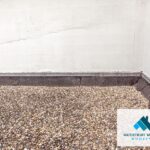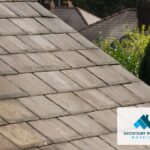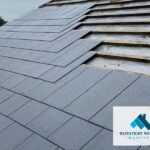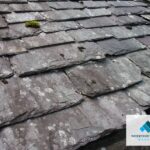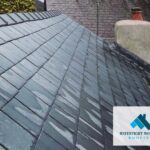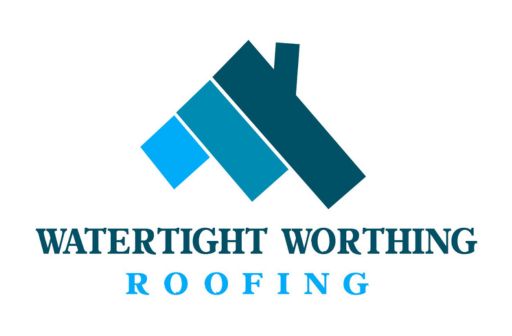Beauty is a subjective concept and this is particularly true when it comes to commercial roofing. Today’s business world is highly competitive and how a roof looks plays a crucial role in captivating customers and influencing their perception of your brand. It is essential to ensure that the roof is not just visually appealing, but also provides reliable protection from the elements. This may seem challenging, but with the help of professional roofing contractors, you can create a roof that excels in both aesthetics and functionality.
When designing a commercial roof, there are several factors to consider. Striking the perfect balance between the two is key to creating a structure that is both attractive and effective. Case studies have shown that these two elements can be harmoniously combined to produce wonderful results.
Here, we will explore the importance of having a well-designed commercial roof and the considerations needed for its design. We will also look at successful case studies that demonstrate how a successful commercial roof can be achieved, allowing you to make informed decisions about your own projects and unleash your vision.
Importance of a Well-Designed Commercial Roof
You can’t overstate the significance of having a well-designed commercial roof. It’s a harmonious blend of functionality and style that makes your project stand out from the rest. Regular roof maintenance is beneficial as it helps increase the life of your roof, saving money in the long haul.
Carrying out periodic inspections, spotting and addressing any issues quickly, can stop minor problems from escalating into major repairs or even total replacement. With climate change becoming more and more evident, it’s essential to think of its effect on commercial roofing. A well-designed roof should be able to withstand tumultuous weather events such as heavy rain, powerful winds, and high temperatures.
Investing in high-quality materials and adequate insulation will protect your building and ensure energy efficiency and cost savings on heating and cooling expenses.
Factors to Consider in Commercial Roofing Design
When designing a commercial roof, there are several factors to consider. Energy efficiency and maintenance requirements must be taken into account. Proper insulation, reflective coatings, and the use of sustainable materials can help reduce heating and cooling costs, making the roof more cost-effective and environmentally friendly in the long run.
In addition, ease of access for repairs, durability of materials, and regular inspections should be considered to ensure the longevity and functionality of the roof. By incorporating these factors into the design, you can provide a roof that is aesthetically pleasing while meeting clients’ energy efficiency and low maintenance requirements.
Balancing Aesthetics and Functionality
When it comes to balancing aesthetics and functionality in commercial roofing design, there are some key points to take into account.
Incorporating the building’s architectural style is essential for creating a unified and aesthetically pleasing look.
It is also necessary to meet building codes and regulations to guarantee the project’s safety and compliance.
By considering these aspects carefully, you can achieve a successful commercial roofing design that blends both aesthetics and functionality seamlessly.
Incorporating Architectural Style
Blending architectural style with commercial roofing ensures successful projects that are both visually appealing and functional. By including the latest architectural trends into your roofing design, you can create a structure that stands out and captures attention.
Whether it’s sleek and modern or classic and timeless, the right roofing style can improve the overall aesthetic allure of your project.
To arouse emotion in your audience, consider these three key factors when choosing an architectural style for your commercial roofing:
1) Sustainable materials: Utilizing eco-friendly materials helps reduce environmental impact and shows your commitment to sustainability.
2) Energy efficiency: Choosing energy-efficient roofing systems can significantly decrease utility costs while decreasing the carbon footprint.
3) Durability: Investing in resilient roofing materials guarantees longevity and reduces maintenance requirements, providing assurance for years to come.
By thoughtfully assessing these factors and picking an architectural style that aligns with your vision, you can achieve a commercial roofing design that combines beauty with functionality.
Meeting Building Codes and Regulations
Meeting building codes and regulations ensures that your commercial roof design complies with safety standards and legal requirements. Building safety is paramount when constructing a functional and reliable commercial roof. Adhering to compliance standards safeguards the well-being of your employees, customers, and the overall integrity of your business.
Building codes provide guidelines for factors such as structural stability, fire resistance, wind uplift resistance, and waterproofing systems. These regulations protect against potential hazards while providing a framework for efficient maintenance and repair practices. Complying with building codes guarantees that your commercial roof will last and lessen risks associated with weather events or structural failures.
Stay abreast of current compliance standards to create a safe environment for all involved in your project.
The Role of Professional Roofing Contractors
Hiring a professional roofing contractor ensures that your commercial building’s roof is both aesthetically pleasing and structurally sound. Their expertise plays a crucial role in obtaining successful projects, as they possess the necessary skills and knowledge to handle intricate roofing systems.
Outsourcing this task brings multiple advantages, such as:
- Expertise: Professional contractors are well-versed in the latest industry knowledge and techniques to deliver remarkable results.
- Efficiency: They have the experience and resources to complete the project promptly, avoiding unnecessary delays.
- Safety: Roofing contractors prioritize safety protocols, guaranteeing that all work is done in accordance with regulations and minimizing potential dangers.
By relying on professionals for your commercial roofing needs, you can feel assured that your building’s looks and functionality will be combined harmoniously for a successful project.
Successful Case Studies in Commercial Roofing
If you’re curious about real-life examples of how professional contractors have transformed commercial buildings with their roofing expertise, these impressive case studies are worth exploration.
These success stories illustrate the combination of aesthetics and functionality in commercial roofing projects. A shopping center needing a roof replacement due to leaks and outdated design was a notable example. The professional roofing contractor provided cost-effective solutions while including sustainable roofing options. Utilizing environmentally friendly materials and implementing energy-efficient measures, they decreased the building’s carbon footprint while improving its appearance.
Another case study involved a warehouse facility requiring an upgrade to meet modern safety standards. The contractor installed a durable, weather-resistant roof that improved the building’s structural integrity and provided long-term cost savings through reduced maintenance needs.
These successful case studies show how professional contractors can deliver aesthetically pleasing and functional roofing solutions that are cost-effective and sustainable.
Frequently Asked Questions
What are some common challenges or issues that can arise during a commercial roofing project?
When it comes to commercial roofing projects, there are common challenges and issues that must be addressed. Proper installation is essential to guarantee the roof’s long-term quality and reliability.
Possible complications include the need for unexpected repairs due to weather-related damage or leaks. It’s vital to take quick and effective action to reduce any further harm and ensure the project’s success.
How does weather and climate affect the design and functionality of a commercial roof?
Extreme weather can have a considerable impact on the design and functionality of commercial roofs. Heavy rain, strong winds, and extreme temperatures can all place stress on the roof’s structure and materials. Good insulation is important in commercial roofing to protect against heat loss or gain, which can result in increased energy costs. Additionally, insulation helps stop moisture buildup, which could cause mold or other damage. Ensuring a well-insulated roof is essential for maintaining both comfort and cost-efficiency in commercial buildings.
What maintenance and upkeep is required for a commercial roof to ensure its longevity?
Proper maintenance and upkeep are essential for extending the lifespan of your commercial roof by up to 50%. Taking proactive steps, such as routine inspections, cleaning debris, and repairing any damages, will help protect your investment and prevent costly repairs. Ensuring proper drainage is also crucial. Investing in regular maintenance will save you money in the long run.
Are there any specific regulations or building codes that need to be considered when designing a commercial roof?
When designing a commercial roof, several building code considerations and regulatory requirements must be taken into account to ensure the safety and structural integrity of the roof, as well as compliance with local laws.
Wind resistance, fire ratings, insulation requirements, and drainage systems must all meet specific standards.
It’s essential to work closely with architects and contractors knowledgeable about these regulations to ensure a successful and compliant commercial roofing project.
How can the choice of roofing materials impact the energy efficiency of a commercial building?
Choosing the right roofing materials for your commercial building can have a major effect on its energy efficiency. Materials that have been designed to insulate and reflect heat can reduce the climate impact and lower energy usage. These materials often require less maintenance, saving you money and time in the long haul.
It’s important to consider building codes and regulations to make sure your choice of materials meets all requirements.
We want to take the time to thank you for reading our article, please consider checking out our roofing services below:


